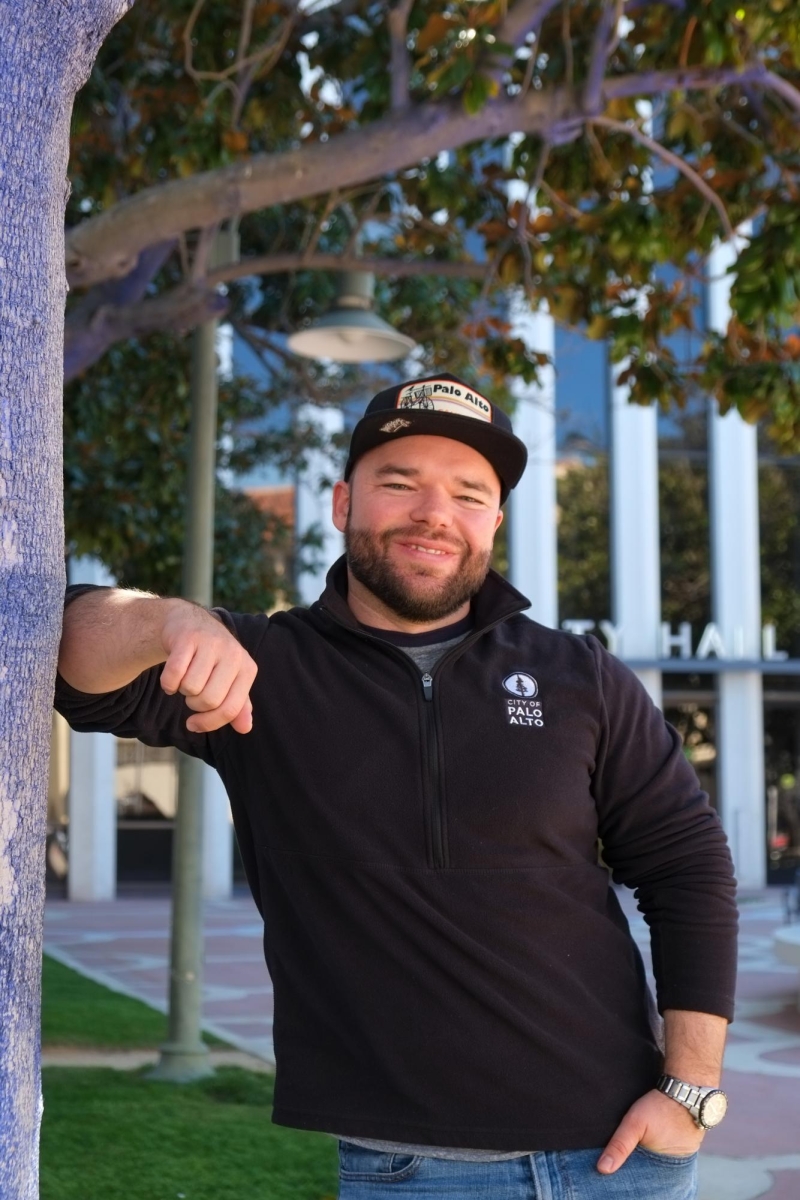Greer Stone knows Palo Alto like the back of his hand. Born in Redwood City, Stone moved to Palo Alto before kindergarten.
He attended Duveneck Elementary School, Frank S. Greene Jr. Middle School and Palo Alto High School before moving to Southern California to study political science at the University of California-Irvine.
For Stone, being a Palo Alto native has helped him navigate the difficult job of representing Palo Alto’s community.
Stone said that Palo Alto’s high-quality education was integral to preparing him for the role of mayor.
“I still think the best education that I’ve ever received really came from the Palo Alto school district, Paly in particular,” Stone said. “It’s hard to see it in real time, but the experience you’re getting, the education you’re receiving, and the caliber of the teachers there really sets you up for success in life. It’s challenging, but when you go off to college in two or three years, you’re so well prepared for that next leg of your journey that it’s going to feel easy to you.”
Growing up, Stone didn’t consider himself a naturally good student, having struggled in school due to a learning disability.
“I was not a good test taker and I always felt stupid compared to my peers,” Stone said. “But there were several teachers along the way who never gave up on me, always believed in me [and] taught me how to embrace my own learning style. Because those teachers never gave up on me, I never gave up on myself. I think it was because of all that that I was able to go on and go to a very good university, go to law school, and do well, both in my professional and elected career.”
Stone’s priorities as mayor draw from his experiences as a youth in Palo Alto. For Stone, that means promoting youth mental health, which is a personal issue for him.
“When I was a kid in Palo Alto, I felt like my own voice didn’t matter,” Stone said. “I think that’s a common feeling for young people in this city.
There’s a tendency to think, ‘Oh, I don’t matter.’ That couldn’t be further from the truth. This is a community that values the young people of this community and wants to make sure that you succeed academically, professionally and even more importantly, socially [and] emotionally. We really value your voices.”
On the night he was elected, Stone announced the formation of the Youth Wellbeing and Mental Health task force.
“The goal of that task force is to be able to recognize what the most pressing needs [are] for the youth in the community and then ultimately make recommendations to the city council in order to promote various policies or programs to benefit youth well being and address mental health concerns,” Stone said.
Stone said he believes further change must occur within PAUSD schools.
“I’d love to see more collaboration between the school district and the city on a variety of issues, especially with youth mental health,” Stone said.
Stone explains that mental health issues such as stress, anxiety and depression don’t end for students once the school day is over, highlighting the importance of creating a seamless transition from mental health resources available at PAUSD schools and mental health resources provided by the city.
Stone said a piece of advice he would give to students is to speak up about their wants and needs and to utilize the resources available.
“One thing we’re starting to really understand through this task force is a lack of awareness around those resources … [not just from] the student perspective, but also [from] the community perspective,” Stone said. “I think we need to do a better job at really telling people about what all those resources are and we’re trying to figure that out right now. How do we do that? How do we do that effectively? So I think there’s some important messages to get out there.”
Even as Palo Alto adapts to challenges such as mental health, Stone said he continues to appreciate the character of the city.
“Our downtown is such an incredible gem of this community,” Stone said. “Every single Friday night, my friends and I would go to downtown Palo Alto, grab dinner, walk around and just enjoy [the atmosphere]. That hasn’t changed.”



